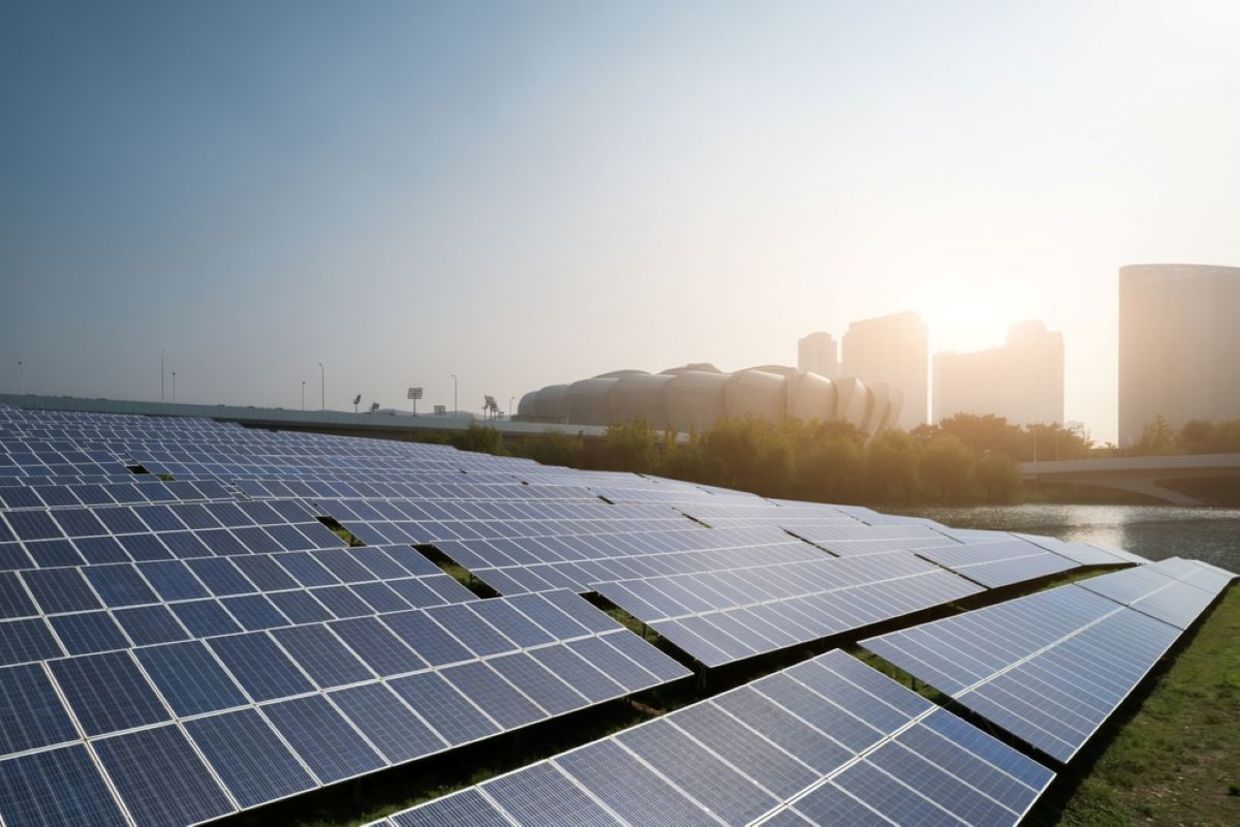
(4045 / Shutterstock.com)
Imagine a futuristic smart city where the walls, windows, streetlights, and cars can absorb energy from the sun and transform it into usable electric power. This city could generate a significant amount of clean, renewable energy throughout the day, reducing dependence on fossil fuels and setting a new standard for eco-friendly urban life.
An emerging technology from Japan is bringing this futuristic dream one step closer to reality, MyElectricSparks reports. The island nation is investing in a new and innovative material for forming light and flexible solar panels that could allow it to generate about the same energy as 20 nuclear reactors, without having to allocate large amounts of its limited space to build solar farms.
A Goal of Reaching Net-Zero Carbon by 2050
Japan’s investments in solar technology are an example of how the country has turned disaster into opportunity. The 2011 earthquake and tsunami that took down the Fukushima nuclear reactor forced Japan to reconsider its strategy for electric power generation, according to Unión Rayo.
With a national goal in place of reaching zero carbon emissions by 2050, Japan has had to rethink how to generate sufficient clean and renewable energy with less reliance on fossil fuels. The country turned to solar, experimenting with different materials and methods for building solar panels. They were forced to think creatively since as a small country with a large population, Japan lacks the available land to generate renewable energy.
Perovskite Panels
Perovskite is a cheap and lightweight man-made material with a crystalline structure. Perovskite cells weigh only one-fifteenth as much as silicon solar panels and are one-twentieth of the thickness, JAPAN Forward reports. It is durable enough to last around a decade when exposed to the outdoor elements.
In 2009, a Japanese research team uncovered perovskite’s remarkable ability to turn sunlight into energy. One benefit of the material is that perovskite solar cells are significantly lighter than traditional silicon cells, and can be placed on the walls and windows of buildings, enabling urban areas to turn into zones that produce energy. This dual-usage technology could solve Japan’s energy and land constraints at the same time.
A Benefit to Japan’s Economy
The use of perovskite benefits Japan in another way as well. The material is synthesized from iodine, a mineral that is found in abundance in Japan. Japan currently produces roughly 30 percent of the world’s iodine.
A news release from Japan Energy Summit & Exhibition explains that investing in perovskite solar panels for energy would keep Japan’s supply chains local, and could reduce dependence on other countries and strengthen its economic security.
It could also boost Japan’s position when it comes to solar panel manufacturing. The country used to be one of the leading global solar panel manufacturers, but it lost its top spot due to subsidized competition from China and now only produces less than one percent of global solar cells. Japan hopes the unique perovskite technology will allow it to regain its competitive edge.
Japan’s new energy plan, developed by the Ministry of Industry, prioritizes the development of perovskite solar cells, with the aim of producing 20 gigawatts, the equivalent of energy generated by 20 nuclear reactors, by 2040. The government, in partnership with Sekisui Chemical Company, aims to create affordable and efficient solar cells for broader market applications in the 2030s.
View this post on Instagram
Manufacturing Perovskite Solar Cells
The Japanese government has allocated $405 million in subsidies to Sekisui Chemical to manufacture the panels, according to JAPAN Forward. The company could provide electricity to 25,000 households in Japan by 2027.
Its initial perovskite cells are likely to be more expensive than traditional silicon panels. However, the company hopes that over time they can streamline their production processes and bring down costs.
Sekisui Chemical’s perovskite solar cells have already been set up at various locations, including Sekisui’s Osaka headquarters and at a bus stop in Osaka. Japan’s goal is to create a cleaner and greener future, not by building bigger power plants, but by reimagining and creatively utilizing urban surfaces. The country’s innovative solar technology proves that energy solutions, capable of rivaling nuclear power stations, can be woven into the fabric of daily life.
YOU MIGHT ALSO LIKE:
Solar Shines Brighter in the EU
More Paris Streets are Going Car-Free
Micro Wind Turbines are Taking Off







